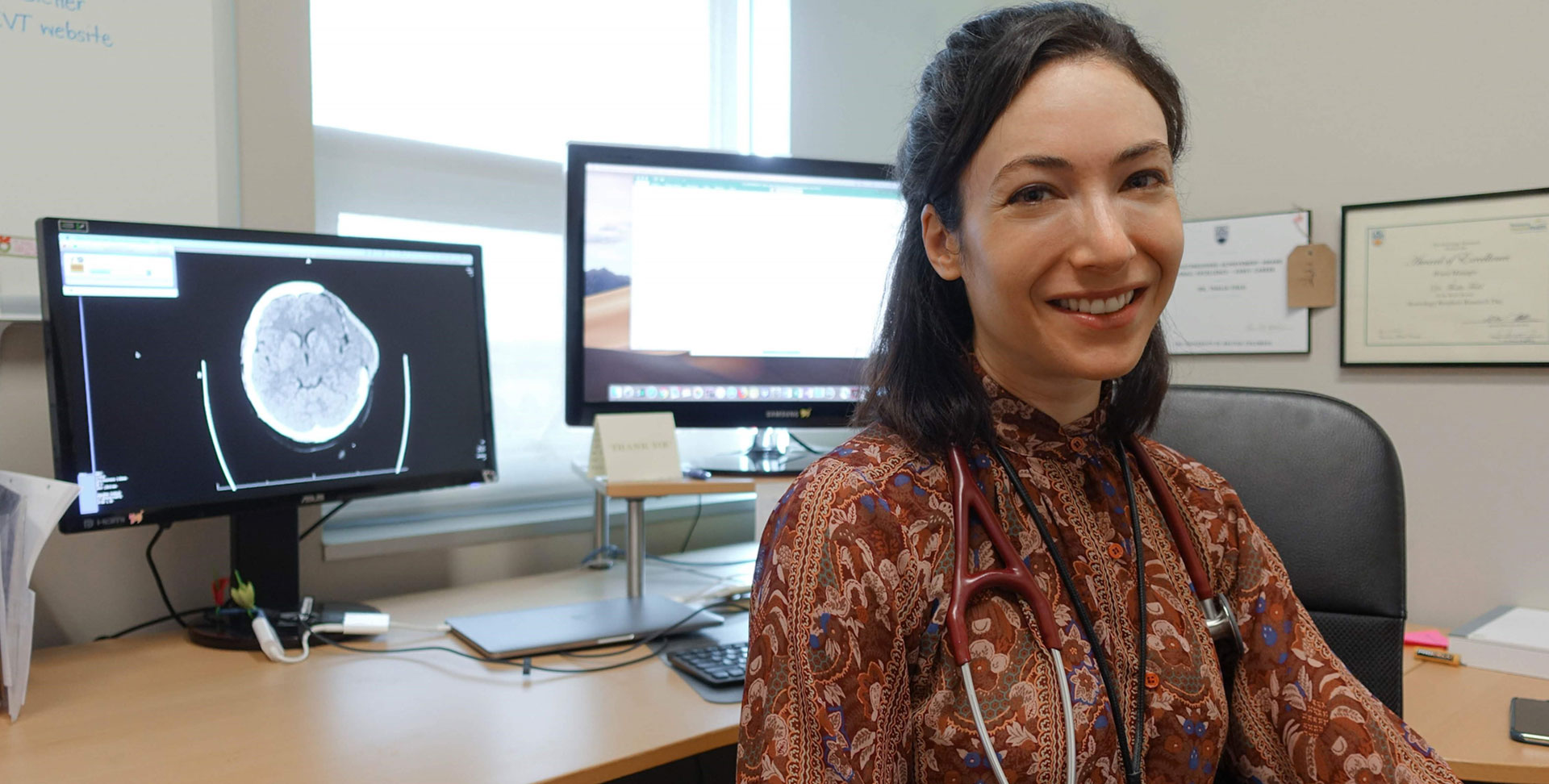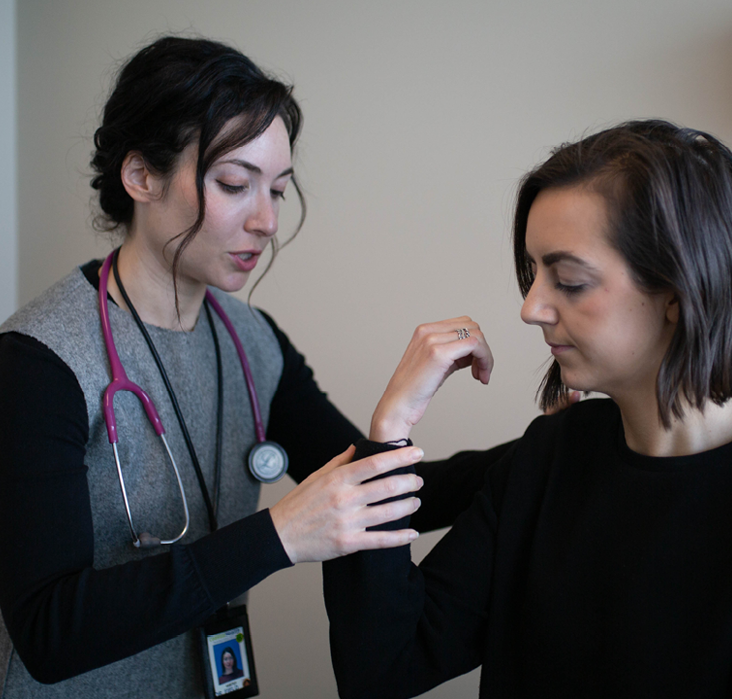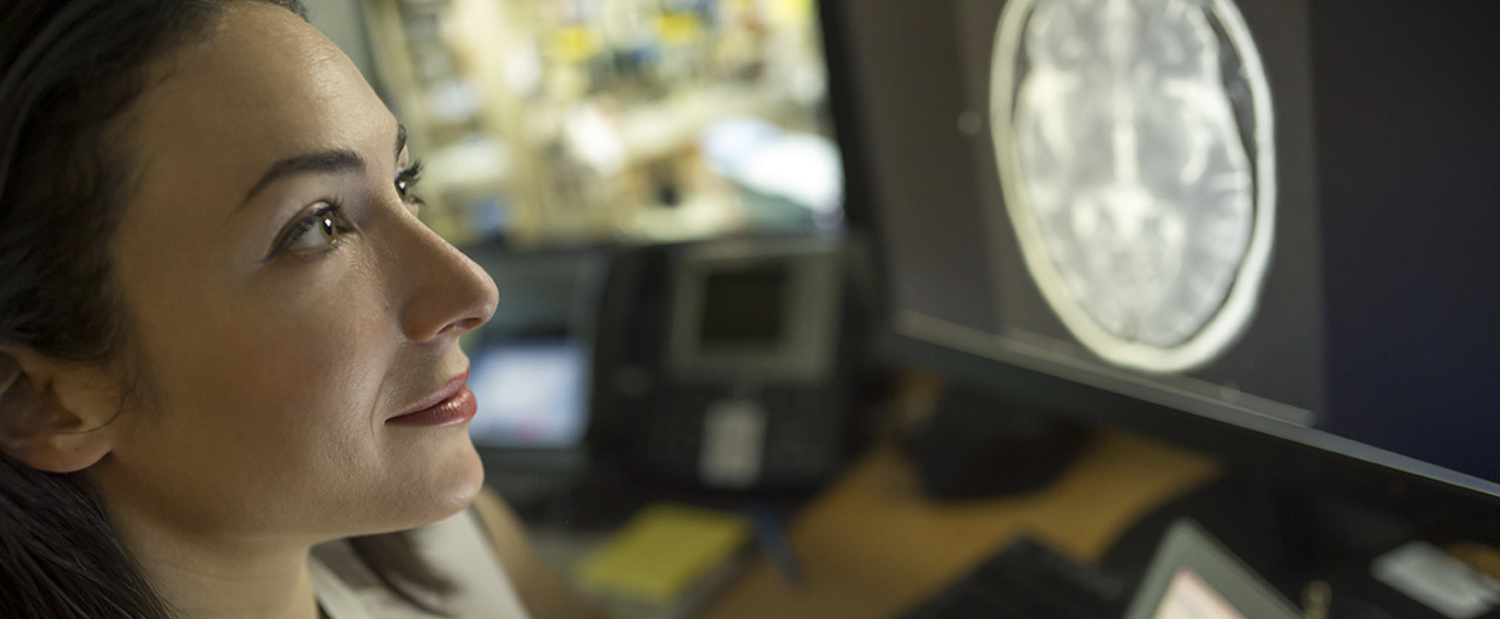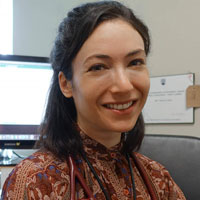
Shedding light on a rare stroke
CVT affects mostly women and we’re learning a lot more about it, thanks to Dr. Thalia Field
Chapter 1 So many questions
Not all strokes are created equal. Cerebral venous thrombosis or CVT is one that’s both rare and difficult to diagnose.
If Dr. Thalia Field has her way, we’ll know a lot more about diagnosis, treatment and long-term impacts of CVT when she wraps up an innovative clinical trial at the end of 2022.
Dr. Field, a stroke neurologist and researcher, holds the Sauder Family and Heart & Stroke BC & Yukon Professorship in Clinical Stroke Research.
She is a leading expert on CVT, which occurs when a blood clot blocks a vein draining blood from the brain. Diagnosing it is difficult because symptoms — such as a severe headache and blurred vision — differ from the most typical signs of stroke.

Dr. Thalia Field is a leading expert on cerebral venous thrombosis (CVT).

Symptoms of CVT differ from the typical signs of stroke, which is why diagnosing it is difficult.

Dr. Field’s trial is testing a new treatment and documenting the experience of people with CVT.
CVT affects mostly women, most of them under 50. It accounts for about 1% of all strokes. About 85% of people are functionally independent after CVT, but half experience long-term issues with cognition, pain, fatigue or mood, which may leave them unable to return to work or school.
“Because CVT is rare and because these tend to be younger and higher functioning stroke survivors, there are so many questions that aren't answered,” says Dr. Field.
Chapter 2 Giving patients a voice
Dr. Field set to work trying to find some of those answers, launching her trial in 2019 with support from Heart & Stroke donors.
The trial is testing a new blood thinning medication as a treatment. It is also breaking ground by documenting the experience of people with CVT, including emotional and social impacts.
One unique aspect of the trial is that it is patient informed; patients are asked what they think is important to investigate and are involved before, during and after the study.
The rarity of CVT forced Dr. Field and her team to integrate video conferencing and phone communications into their plans from the start.
“The question was, how do we include as many people as possible with the disease?” she says. The answer was using technology to communicate with some participants who live far from major hospitals. This also allowed the researchers to include people who are often underrepresented in research, such as younger women managing family commitments, jobs and more, Dr. Field adds.
When the pandemic hit in early 2020, going entirely virtual was relatively simple, she says. “We had to make some adaptations, but certainly, we were ready.”
Chapter 3 What’s next
As the trial continues, Dr. Field says, “There are elements that people need to come to hospital for; we can't conduct a brain scan remotely. But a lot of the assessments are being done virtually.”
In fact, Dr. Field sees huge potential for virtual health care, especially for increasing access to stroke rehabilitation services. “I think virtual care has been an under-tapped resource for so long. Trying to access outpatient rehab has been a challenge for many of our patients.”
As for her research, interest in CVT jumped in 2021 with news headlines potentially linking one COVID vaccine to rare blood clots.
Dr. Field jumped into action along with CVT researchers around the world, collaborating with experts in public health and vaccine safety to monitor cases.
She is pleased with the outcome. “Multiple papers from this international collaboration have been published or presented that have helped to inform public health practices and therapeutic strategies,” Dr. Field says.
Meanwhile she keeps her eye on the goal: improving care and outcomes for people who experience CVT.
- Learn more about stroke.
- Learn more about Heart & Stroke research.

Join the fight to end heart disease and stroke.
Related stories

A fearless artist faces his biggest foe

Loving life while living with heart disease
Three surgeries have changed Suji’s heart, but not her passion for life

